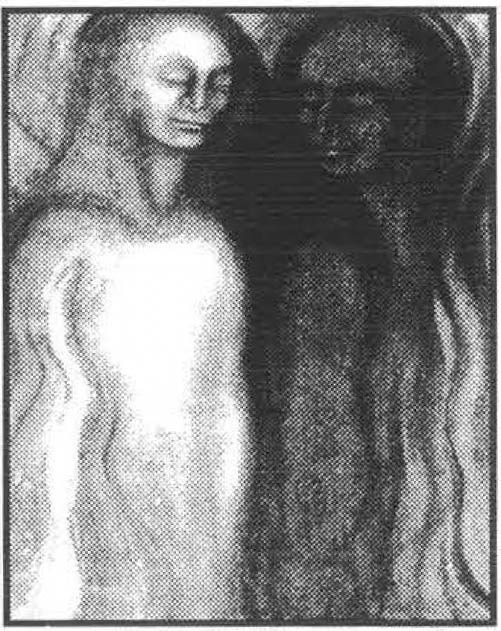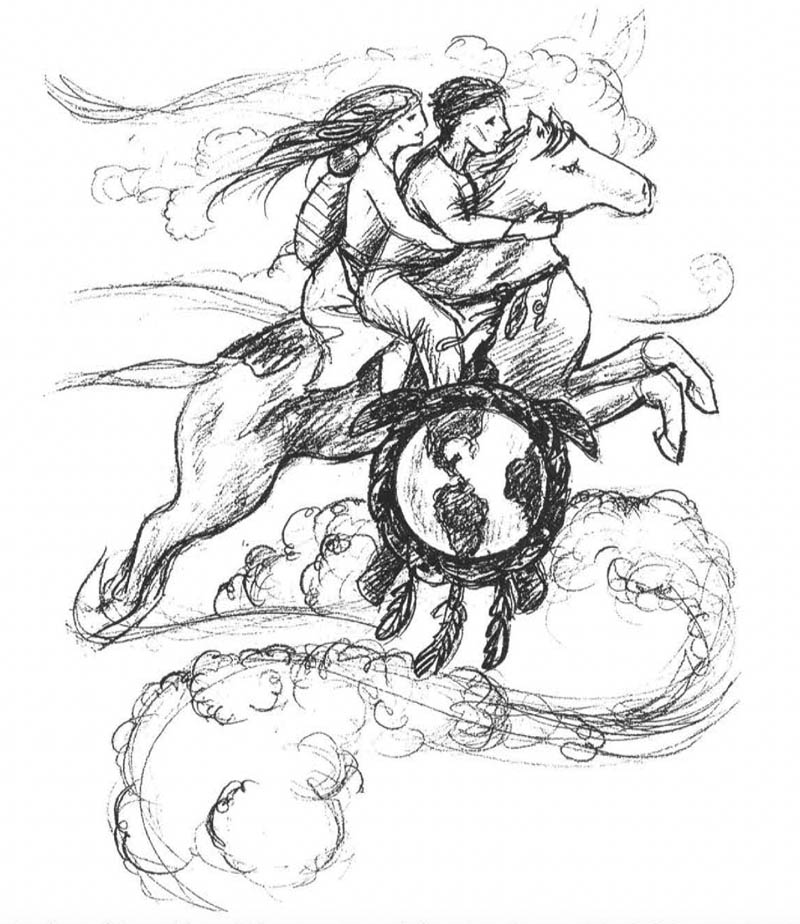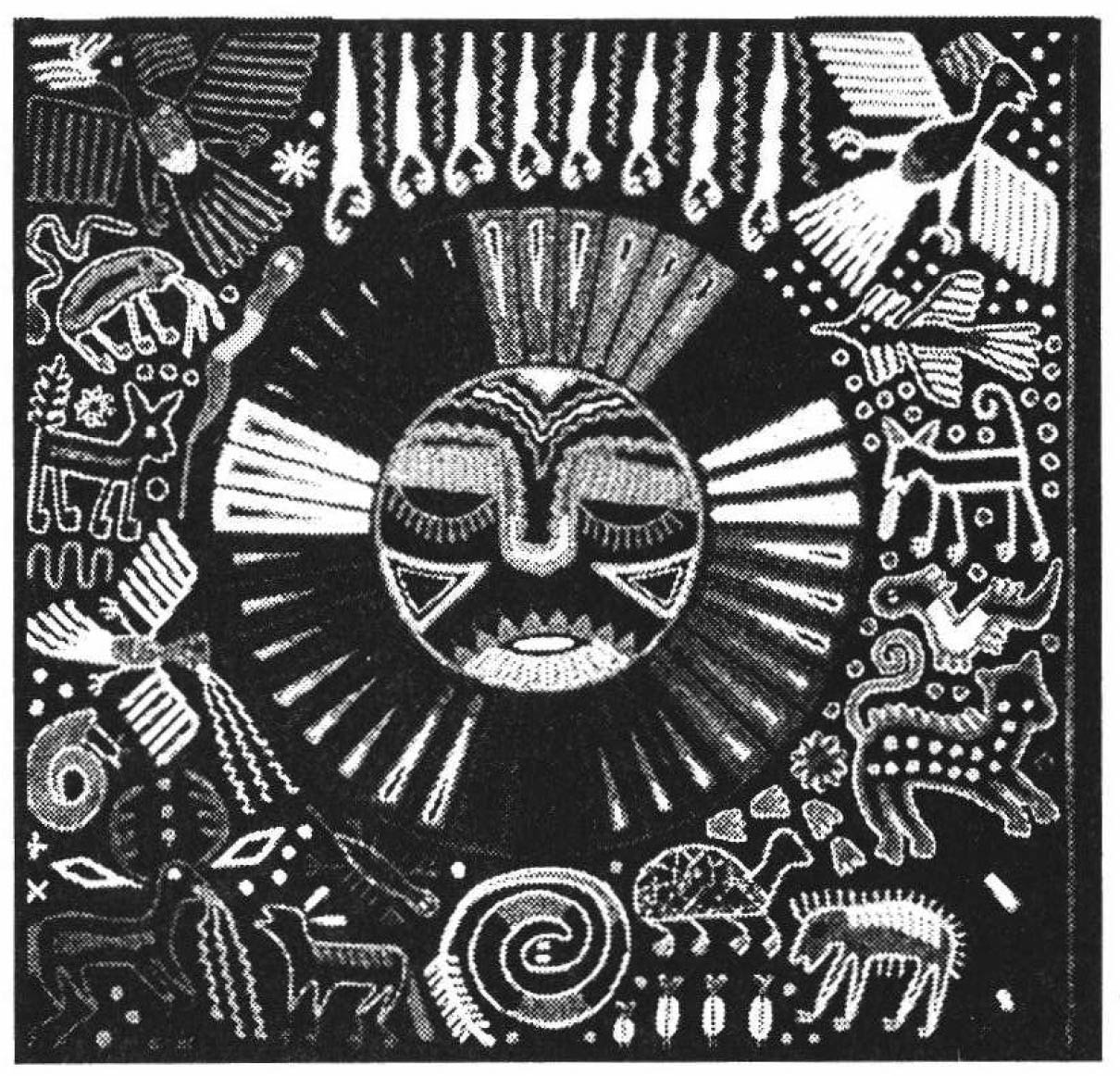
Five simple words, "if this were my dream" make the Ullman (1996, 1999; Ullman & Zimmerman, 1979) process of Dream Appreciation one of the most profound instruments I have found to unlock the messages in dreams - and more. I had the privilege of participating in three dreamwork trainings with Monte Ullman in the late 1990s.
Ullman began his career as a psychiatrist but soon discovered the power of working with dreams and dedicated his life to teaching a method that allows the dreamer, as well as dream group participants, to access the deepest recesses of the unconscious. He believes that there is a species consciousness that is calling for our personal and collective survival and drawing us toward our ongoing evolution. Each of us, according to Ullman's philosophy, contain billions of single-celled organisms that have formed collectives of organs, systems, and functions, as they are learning to live as one, and as species, we are several billions of people also learning to live as one. Just as the human being cannot survive if cells become self-destructive or attack other life giving cells within the body, the species cannot survive if we, as individuals or as social groups, destroy others or ourselves with destructive patterns.
I interpret this to mean that for us to survive, cells and human beings must learn to respect life both individually and collectively. We must honor boundaries without creating impermeable walls, be distinct without separating, connect without absorbing or being absorbed, and be flexible without collapsing as we change and grow. We must actively share, nurture, love, and allow each and all to survive and thrive. However, in our development, as individuals and in social units, we have formed patterns that are a danger to ourselves and to our species. Ullman suggests species consciousness, perhaps something akin to Jung's collective unconscious, is the universal force that seeks to bring into awareness those behavior patterns that can lead to destruction. Dreaming is one of the languages of that universal consciousness. Dr. Ullman and Zimmerman (1979) contend that:
The dreamer in us keeps urging us on to greater wholeness... Dreams never give up on us. They are with us every night urging us to face the issues that restrict and discourage us, or that limit our inventiveness. (Pp. 318-319)
In Appreciating Dreams, Ullman (1996) states:
From an evolutionary point of view, there may be another role that our biology plays in connection with our dreams. I think dreamwork brings us into closer touch with a vital aspect of our natural animal heritage. > Animals depend for survival on the accuracy and truthfulness of their sensorially perceived world. That dependency is still with us in our effort to adapt to a still imperfect human environment. The task is a bit more difficult for us because of the pitfalls and falsehoods that our cultural heritage has subjected us to. To the extent that we are victimized by false notions, we are not free to truly fulfill ourselves. Asleep and dreaming. we are in pursuit of freedom in those areas that have eluded us while awake. The relationship between freedom and truth is the driving force of our dreams. (p. 243)
Picture, if you will, a group of people coming together who are interested in understanding their dreams. It is possible that no-one has met anyone else in the group and yet, by the end of a process, it is likely they will feel as if they have known each other their whole lives. In that time someone or maybe several of the members will have shared with the group a dream. There will have been careful listening, questioning, and each will have had the opportunity to take the dream that is presented as if it were their own. Feelings and metaphors within the dream will have been explored, and meanings orchestrated. There will be a bond that connects the participants through space and time, simply because they dared to look into the darkness, step into it, and discover what is there for them.
Group work, which often makes intimate matters public, is important according to Ullman (1979, 1996, 1999), because it allows the dreamer to use the eyes of the group to see aspects of the self that have been hidden. The waking self often is self-deceptive. To be effective, the group must provide a nonjudgmental, loving environment for the dreamer to expose those intimate matters and safely explore them. The dreamer must remain in charge of the process and be able to stop, limit sharing, or go only as deeply as can be handled. Both the dreamer and the participants have the opportunity to use the dream to discover messages from species-level consciousness and apply them to their own lives. And it all begins when each is willing to say: "If this were my dream."
The Steps in the Process
In Ullman's (1979, 1996, 1999) plan, there is no expert interpreter in dream appreciation. Instead the rich collective life-experience of the members provides an array of multiple levels and diverse viewpoints for many possible interpretations. A group learns the process from one who has been trained in the method; the teacher-leader then takes a place in the group as a participant. Dream presentation is always voluntary and after appropriate training, leadership is voluntary also. Each session is begun by soliciting a volunteer for leadership, with those volunteering deciding who will lead. When the leader is selected, the leader asks if there are any persons wanting to present a dream. The ones who wish to present a dream also decide among themselves who will be the dream presenter in that session. Determining leadership and dream presentation are models of volunteerism, democracy, and ongoing choice, all characteristics inherent in the dream process itself. The dream can be a single image or an entire story; processing can take two or more hours.
In the first stage the dreamer (a) reads or tells the dream while group members write it down, or read along. Upon completion, (b) the group members are free to question about the dream content for clarification. The dreamer is not to contextualize or interpret meanings at this point but is to reflect images, interactions, and feelings within the dream only. By allowing only dream content, participants are able more easily to take the dream into their own personal contexts.
The second stage begins with the first group member who says, "if this were my dream, I would feel..." which signals participants to take on the dream as if they had dreamed it. This is done by sharing their own feelings and when this feels complete, then sharing their thoughts about images and metaphors that they find in the dream content. The diversity of contributions offers many possible interpretations for the I dreamer to consider as he or she explores the potential hidden messages.
In the third stage part (a) the dreamer takes back the dream and may respond to anything that came into awareness as a result of hearing others' comments. This is followed by part (b) in which the dreamer, if open to investigate further, can gain greater meaning by recapturing the events that occurred or the thoughts that were present in waking life prior to the dream. After every aspect and symbol of the dream has been examined for possible meanings in the context of the dreamer's life, part (c) allows the dream to be read back to the dreamer, scene by scene, stopping for any additional insight when appropriate. Group members are then asked to offer what Ullman calls part (d) of stage three which is orchestrating projections to suggest meaningful interpretations of the dream as a whole that link the dream and the waking-reality of the dreamer. Finally, in part (e) the dreamer is given the opportunity to make any last comments.
If the group meets again, the next session begins with giving the dreamer in the previous dream group an opportunity to present any additional insights regarding the dream in the intervening period.
The responsibilities
Forming, leading, presenting, and participating in a dream group requires attention to a number of responsibilities if integrity is to be maintained. Above all else, the dreamer is to be in control of the process, deciding how deep to go, how much to disclose, and whether or not to advance into each stage. If for any reason at any time in the process the sense of safety feels threatened, the dreamer can stop the process and after expressing the need to stop, can choose to continue or end the process. Recognizing the tension that might exist between safety and discovery, the group and group leader can encourage stretching just a bit beyond the comfort level if the dreamer is willing. Always. a high degree of sensitivity is required to nudge without pushing too hard or too far. It is often in the thoughtful nudge that great insight occurs while a thoughtless push can devastate the dreamer and destroy the process.
The leader has dual roles. One is to be a participant; the other is to take responsibility for directing the process according to the stages. This must be done with clarity, flow, and flexibility in a way that honors the needs of the dreamer and the delicacy, yet, power of the process. The leader is to be sensitive to the feelings of both the dreamer and group members. At times it may be necessary to stop the process to clarify or give the dreamer or an affected participant time to recover from emotional responses. All of this must be allowed to flow gracefully within whatever time has been allotted for the work.
Group participants have responsibilities as well. They contribute most meaningfully and gain from the process themselves when they are fully present, when they listen with attention, and intend to experience the dream in thought and feeling. Through "borrowing the dream," the participant is free to make projections based on what is publicly known about the dreamer, or with the dreamer's permission if privately known, or based on memories from the participant's own life without taking the focus away from the dreamer. Participants can be attentive to possible themes, contradictions, or metaphoric meanings, and notice not only what seems present but also what seems absent. It is valuable to notice places that seem to have a charge. All of this must be done without judgment and with sensitive concern for the safety of the dreamer.
Finally, every aspect of the dream itself must be honored as significant communication from the unconscious. A single image, a two-liner, or a multi-phased dream contains a message that was important enough for the dreaming part of the self connected to species consciousness to send. It deserves to be respected and heard.
The power of the process
In the five years I have participated in Dr. Ullman's dream group process at Saybrook with Stanley Krippner and with Dr. Ullman, himself, I have come to deeply respect the potential for transformational healing and self-discovery. In those years of dreamwork, dreamers and participants have been able to face their demons, discover their blind spots, find answers to troubling dilemmas, and understand circumstances in their lives that previously may have seemed unexplainable. The persistence of "species consciousness" seeming to push messages into awareness in spite of individual or group resistance is amazing.
My interest in discovering connections among things caused me to notice that often in dream groups, questions that were raised in the content of the first dream seemed to be answered by the second, and understanding the second dream was made possible within the context of the first. I also noticed this same process going on between dream groups in which I was the only repeat participant. Thematic connections not only clarified dreams in the later group but brought deeper insights into a past dream group's theme. Whatever this "energetic connective tissue" is that flows between cells forming a single person, seems to flow between individuals forming a palpable energetic relationship that exists in groups and between groups. Perhaps species consciousness is somehow in this as yet unexplainable connectivity that makes itself known when we are willing to look for it.
The dissolution of boundaries between dreams and dream group experiences also drew my attention. I recall being greatly surprised the first time I realized that a dream was literally but unconsciously being replicated in the group process. A woman presented a dream in which she experienced herself walking along a busy thoroughfare pulling a cart filled with a heavy load. She forced her way ahead of every one else and created a traffic jam by stopping in the middle of an intersection. The dreamer held her fist in defiance to the blocked angry drivers who began throwing things at her while she was calling attention to the fact that she did not have a car, but rather was pulling her load without help. She woke feeling distressed and unappreciated.
In the dream group, she pressed ahead of other dreamers to insist that she have the opportunity to present her dream. Others who wanted to present their dreams gave in to her almost demanding request, but not without creating a current of anger and resistance within the group. They did not seem to support her with full engagement in the process. Instead they threw out suggestions of interpretations that did not seem useful to her. She found herself dealing with the content of her dream by herself. She continued by making her own interpretations about the meaning of her dream within the context of her recent experiences without incorporating anything that the group had offered. In a moment of profound insight, she became silent, looked around the room, and broke into tears. She realized she had done the same thing in the group that she had done in her dream. She could see that her attitude was what had generated the anger and the lack of support both in her dream and in that moment. For the first time in her life, she understood long held patterns that caused her to believe she had to carry her burdens all by herself. Her breakthrough melted her resistance and the heart of the group. Everyone became willing to help her when she finally got out of her own way by getting out of their way and allowed them to be moved to support her in her breakthrough. What a powerful metaphor!
When I decided to write this paper, I could have selected any number of dreams, but this particular one came to mind and I literally could not remember any of the other dreams I had worked with over the years. By recalling this dream, several years after it was presented, I began to see something I was not in a place to understand at the time that I attended that dream group. I have had a strong, almost rigid tendency to carry my burdens all by myself, always working without a sense of connection to a group. I lived most of my life, within my family of origin and within my marriage, alone. I moved to China alone; my private therapy practice is conducted alone. Even my selection of an at-a-distance program for my Ph.D. is a reflection of my living the metaphor within the woman's dream. Most of my courses I completed without ever asking assistance from professors. This created conflict with a couple of them that delayed receiving credit for my work. As I look at this pattern, I notice that working alone seems to have been choiceless. Some inner belief made me do everything alone. There have been times when working alone has been helpful, and there still may be such times in the future, but there are also times when I need to be able to work cooperatively within a group. Working in isolation may not have been damaging in the past, though I can't really know that. I do know that it is no longer good for me to disallow other options. Now that I am beginning my dissertation, I can see that a rigid, loner-stance would not only be a liability, it could block my reaching the goal.
It is my belief that recalling and using this particular dream at this particular time is no accident. I deeply feel that a loving consciousness has called me to release patterns that would prevent me from becoming who I came here to be. I am being drawn to a new way, connecting and working with others. Somehow, I believe that as changes are made by each of us on a microcosmic level, resonating sounds of doors opening somewhere out there in the universe are heard that might lead to macrocosmic changes for the species.
Probably the most far-reaching aspect of having "dream group awareness" was when I discovered the dream process can be applied to life experience. I became aware that events in people's waking lives had many of the same characteristics as dreams. When taking notes on clients' "stories," I discovered I could pay attention to all the details with the same attention I held as a participant in a dream group. I examined the setting the client reported, looked for themes, noticed tensions and observed contradictions. I looked for metaphoric potential. I looked for what seemed missing, perhaps emotional responses or pieces that didn't seem to connect because something was left out. I listened for a sense of story, a belief or myth that might be playing itself out in the person's life. I noticed the play on words that were embedded in the telling of the story. I even noticed each of the people the client talked about and began to look for aspects of the client that seemed to be reflected in the characters who "peopled" their report. I could take the stories into my life, and experience them as if they were my own, and notice my own responses. I approached the client's story with the same kind of non-judgmental, loving, respect, as in dreamwork. As I orchestrated projections, clients began to gain profound insight and make significant and immediate changes. I am reminded of a report told by Salk (1983), the developer of the polio vaccine.
He said:
Very early in my life I would imagine myself in the position of the object in which I was interested. Later, when I became a scientist, I would picture myself as a virus, or as a cancer cell, for example, and try to sense what it would be like to be either. I would also imagine myself as the immune system, and I would try to reconstruct what I would do as an immune system engaged in combating a virus or cancer cell... Before long, this internal dialogue became second nature to me. (p. 7)
I believe it is this consciousness that is entered in dream group work or in working with clients. Asking clients to look at an issue as if it were a dream and by joining them in the dream by taking it on as if it were mine, we step back to see what is really going on, looking for the myths and belief systems through which they create their lives. The clients recognizes that they have a choice regarding what myths direct their lives and whether or not they will take responsibility for that choice.
I have the choice of interpreting events in my life as a dream and all the participants in the events as characters who hold messages from the greater consciousness, just as I can fill that role in their lives should they choose. I can ask myself the same questions a leader or a participant would ask a dreamer and listen to possible orchestrating projections. More than any other method, the Ullman dream appreciation process has helped me to take responsibility for all that occurs in my life. I am learning to look at my life as I look at dreams, without judgment, blame, or guilt. I notice that on some level everything that comes into my life is a result of my personal myths whether I am consciously aware of them or not. I can choose to be responsible, meaning I can choose to respond. In making the choice of taking responsibility for what I create, I can also move to a place where I consciously create what I choose.
Playing on the words of an old favorite Disney song from "Cinderella," I would say A life is a dream your heart makes, when you are fast asleep. Awaken to the dream!
References
Salk, J. (1983). Anatomy of reality. New York: Columbia University Press
Ullman, M. (1996). Appreciating dreams: A group approach. London: Sage Publications.
Ullman, M. (1999). Variety of dream experiences. (2nd Ed.) New York: State U. of New York Press.
Ullman, M. & Zimmerman, N. (1979). Working with dreams: Self- understanding, problem solving, and enriched creativity though dream appreciation. NY. G.P. Putnam's Sons.








